The 9th of August 2016 was a typical hot & sunny summer day. I spent the whole afternoon rambling across the meadows of the coastal area called Marlera ...

... and I photographed a bunch of insects ...
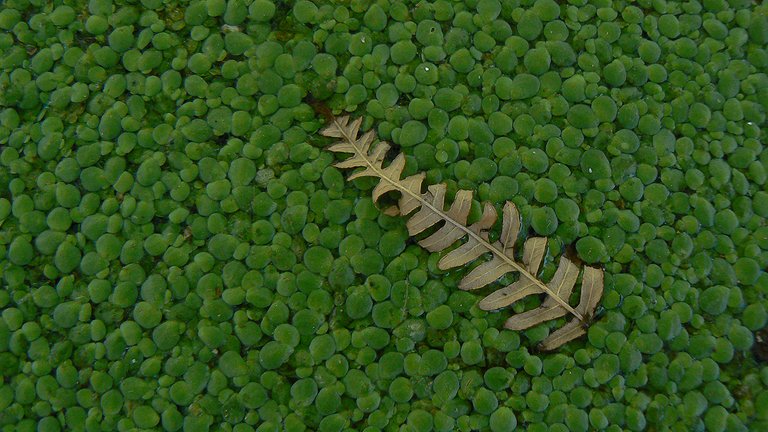
... and some other details along the way.

The moth shown in this and the following photograph ...
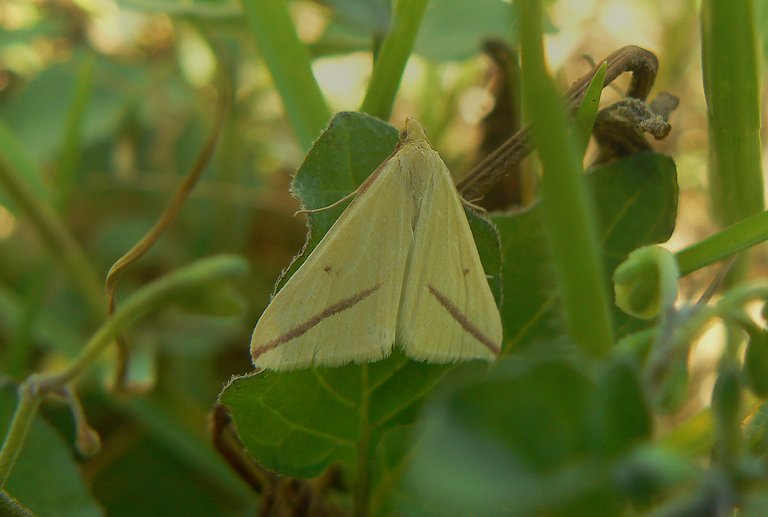
... is the Rhodometra sacraria, a species from the Geometridae family.
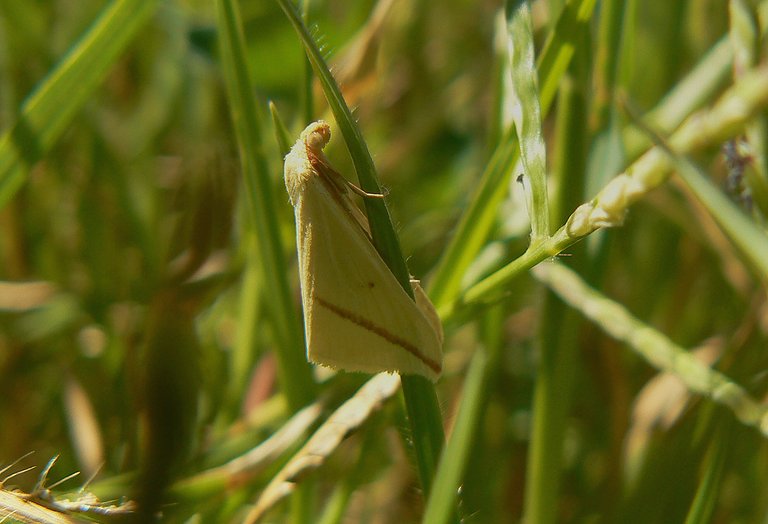
In this shot, the moth is resting in a different pose, a pose that makes it harder to notice among the herbaceous vegetation.
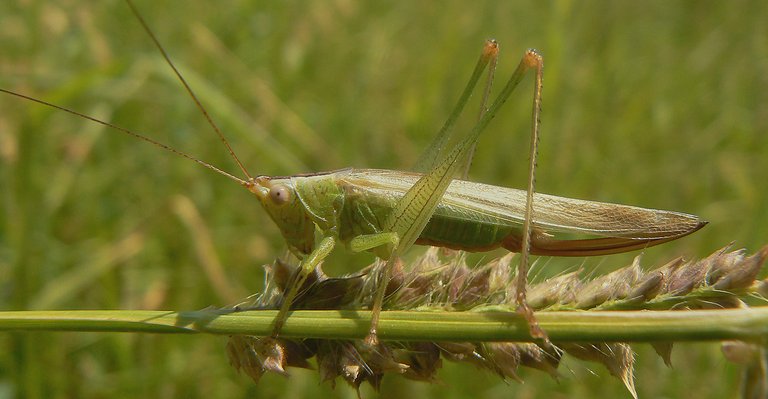
This is the Conocephalus fuscus ...

... commonly known as the long-winged conehead.
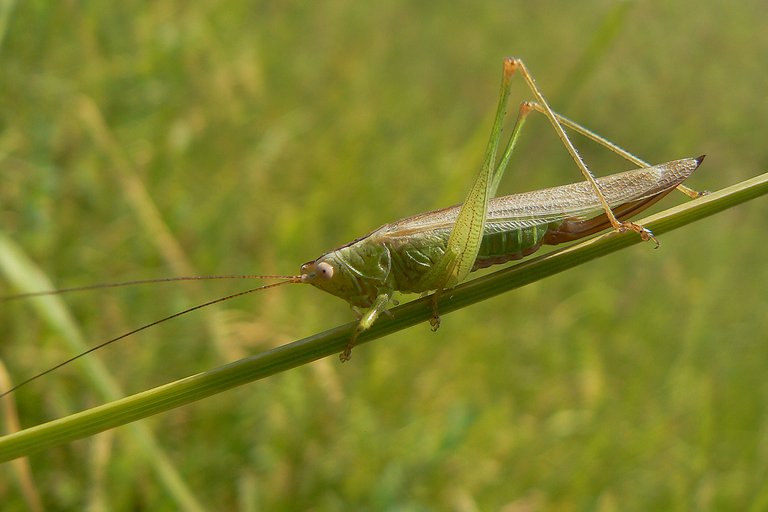
It's a fairly small, elegant bushcricket from the Tettigoniidae family. I mean, all bushcrickets belong to that family, and the previous sentence probably doesn't make that fact clear.

In this shot, the conehead is cleaning its hind leg's foot. In the following photograph ...
... the bushcricket is successfully camouflaged on the Chenopodium album plant.
If you take the time to explore a bit the chaotic details of this shot, you will certainly notice a well-camouflaged grasshopper.

The name of the species is Locusta migratoria, and this is the nymph, a young individual that hasn't developed the wings and reached adulthood.
The elegant insect with beautiful wings, shown in this and the following two photographs ...
... is the Chrysoperla carnea ...
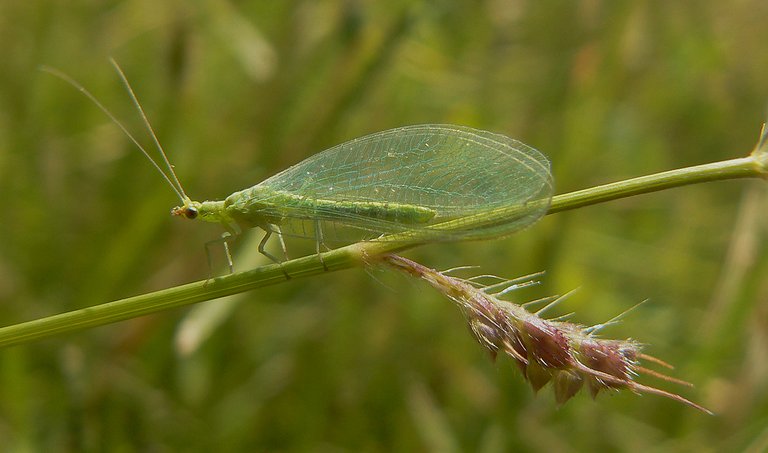
... commonly known as the common green lacewing.
This is the Melitaea didyma, a butterfly from the Nymphalidae family. In the following photograph ...
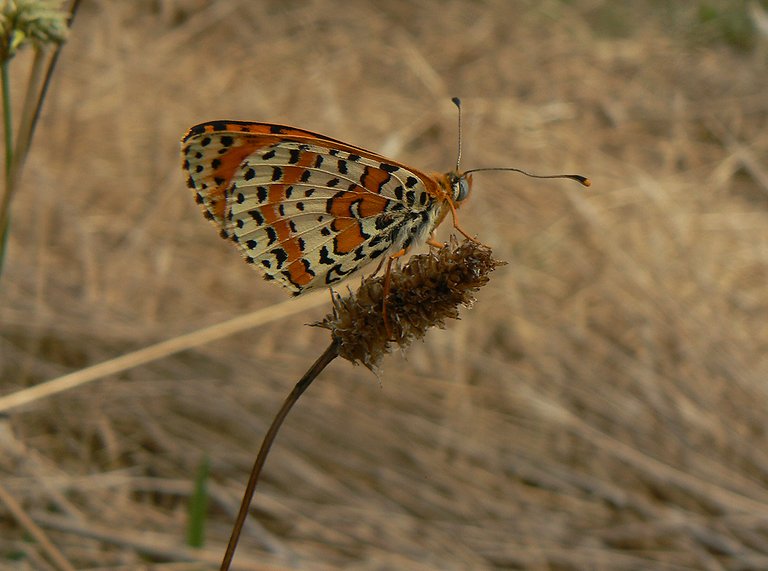
... you can take a look at the colors and markings on the lower surfaces of its wings.
At one point, I came across this small pool made to be a watering place for birds and mammals. The vivid green color of the surface ...
... was provided by the swollen duckweed (Lemna gibba),
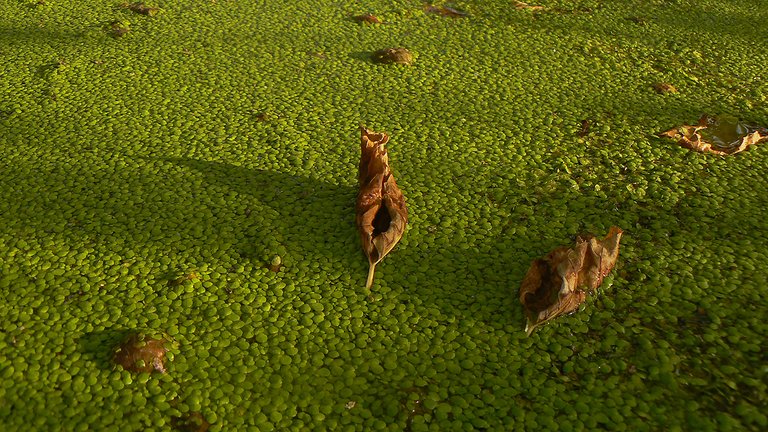
The dry fragments fallen from the surrounding vegetation looked great on that green texture. In this photograph, the focus is on the dry leaves of the nearby mulberry tree. Branches of that tree create an interesting roof-like construction above the small pond.

Fern also grows close to the water.
Here you can see a piece of dry, brown fern surrounded by duckweed.

Here you can see a small green leaf that fell from one of the surrounding plants, can't tell you which one exactly.
As the warm summer wind was blowing, the branches of the tree were moving, creating an interesting interplay of shadows and light on the surface of the watering place.
You can see a bit of that movement clumsily encapsulated in this animated GIF made of two photographs.
Here you can see a feather left by a bird who came for a drink.

A bent piece of fern is the main protagonist of this shot.
In the center of this photograph, you can see the corpse of some kind of small mosquito-like fly.
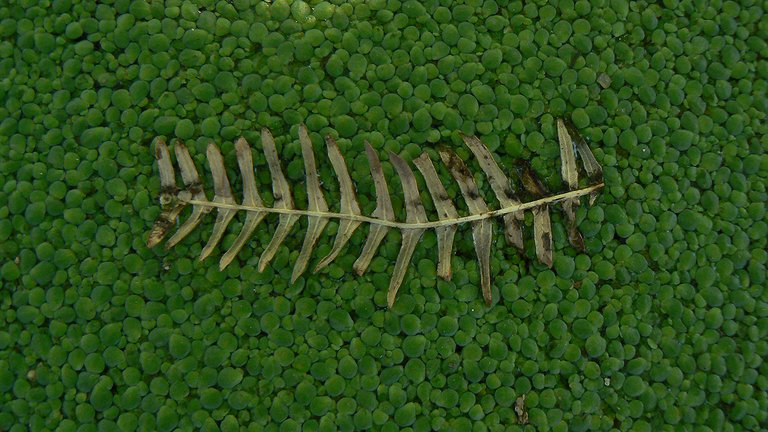
This is another dry fragment provided by the nearby fern.

And that's it. It's time to leave the small pond and continue with insects.

Here you can see an interesting grasshopper that mimics the surrounding vegetation. This is Acrida ungarica, commonly known as the Mediterranean slant-faced grasshopper. A bit further on the same meadow...
... but closer to the ground ...
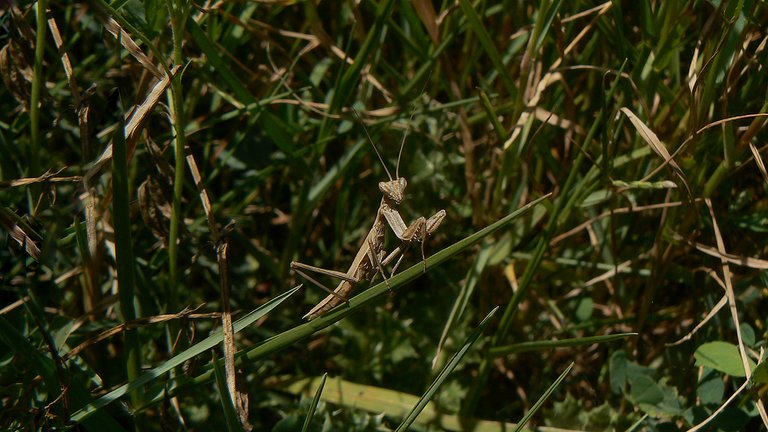
... I found another well-camouflaged insect - a mantis.
This is a nymph, a young, immature European mantis (Mantis religiosa).
Most moths in this area are also well-camouflaged and hard to notice.
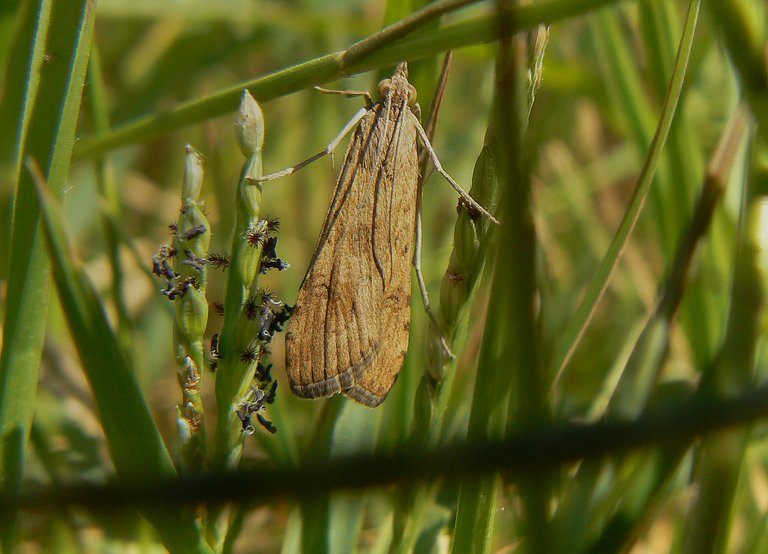
In this and the previous photograph, you can see the Nomophila noctuella, a species from the Crambidae family.
Here you can see a small moth from the Pyralidae family. The name of the species is Oncocera semirubella. The moth, shown in the following photograph ...
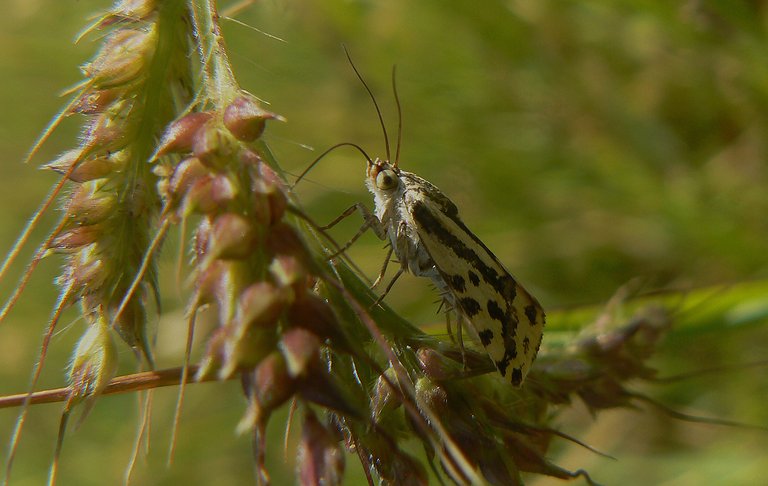
... belongs to the Noctuidae family. The name of the species is Emmelia trabealis. In the following photograph ...
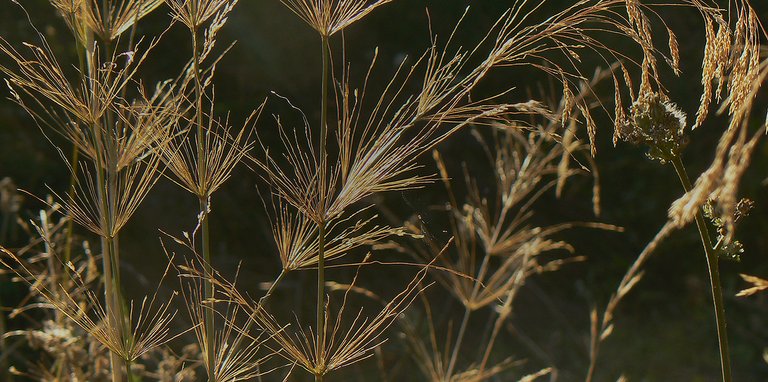
... you can take a look at the dry grass in the beautiful light of the late afternoon.
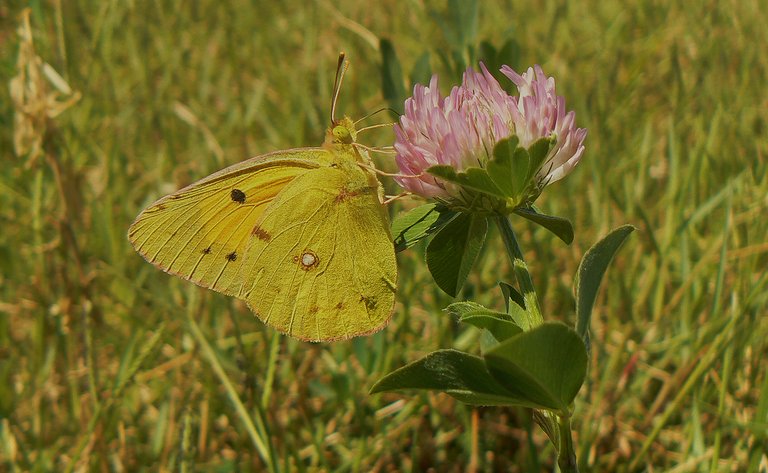
Here you can see another butterfly for a change. This is the Colias croceus, a species from the Pieridae family.

In the evening I photographed another detail of the dry grass, in a different type of light this time ...
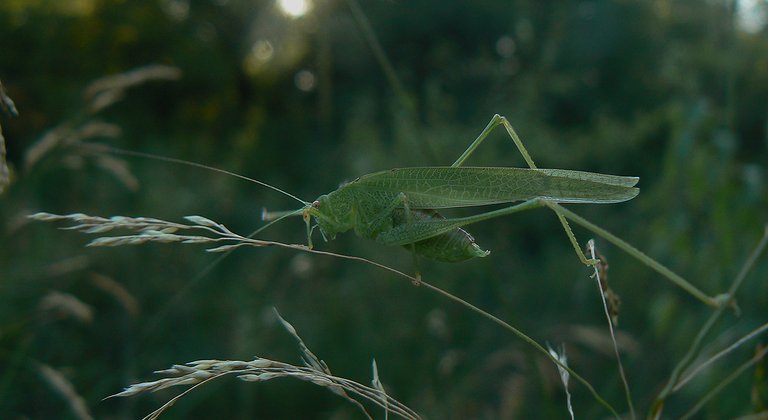
... and this Phaneroptera nana bushcricket that was climbing the tall grass.
AND THAT'S IT. AS ALWAYS HERE ON HIVE, THE PHOTOGRAPHS ARE MY WORK
The following links will take you to the sites with more information about the protagonists of this post. I found some stuff about them there.
https://en.wikipedia.org/wiki/Rhodometra_sacraria
https://en.wikipedia.org/wiki/Conocephalus_fuscus
https://en.wikipedia.org/wiki/Migratory_locust
https://en.wikipedia.org/wiki/Chrysoperla_carnea
https://en.wikipedia.org/wiki/Melitaea_didyma
https://en.wikipedia.org/wiki/Lemna_gibba
https://en.wikipedia.org/wiki/Acrida_ungarica
https://en.wikipedia.org/wiki/European_mantis
https://en.wikipedia.org/wiki/Nomophila_noctuella
https://en.wikipedia.org/wiki/Oncocera_semirubella
https://en.wikipedia.org/wiki/Emmelia_trabealis
https://en.wikipedia.org/wiki/Colias_croceus
https://en.wikipedia.org/wiki/Phaneroptera_nana
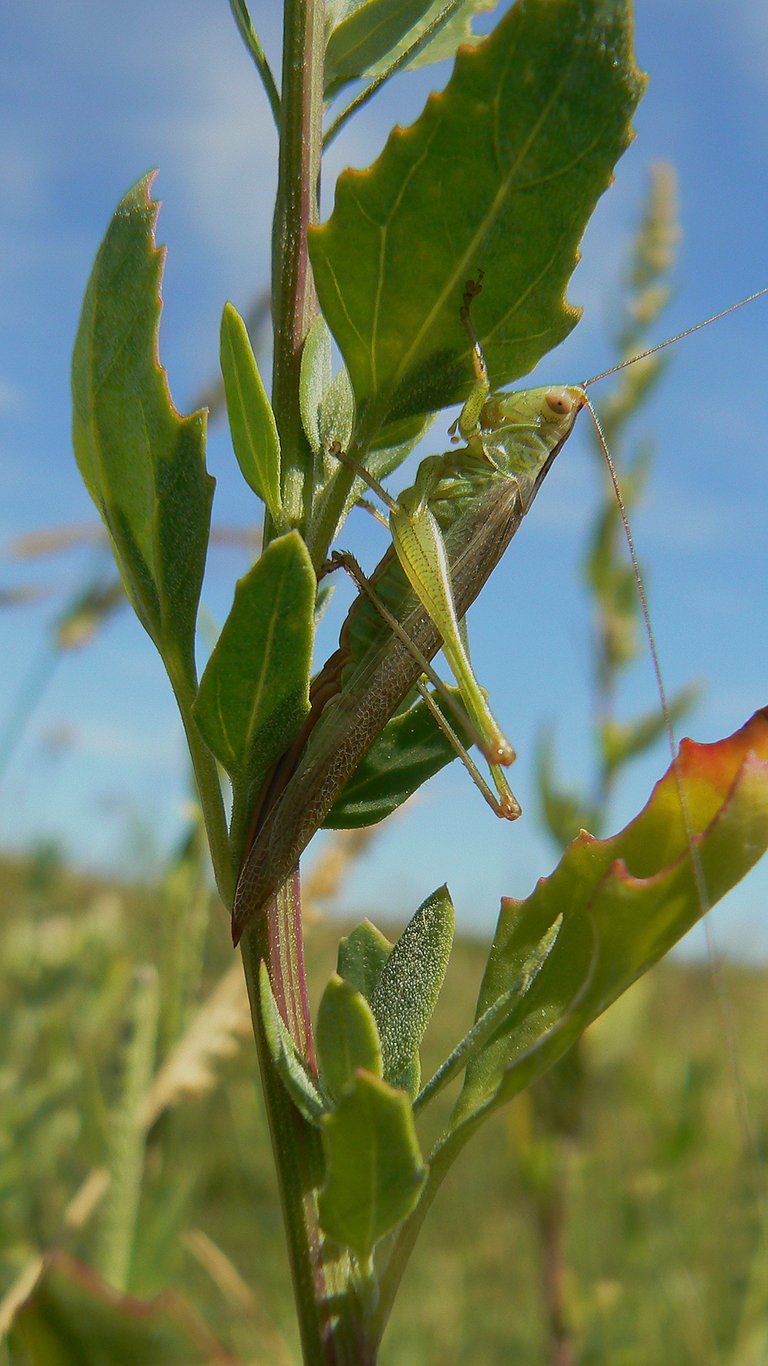
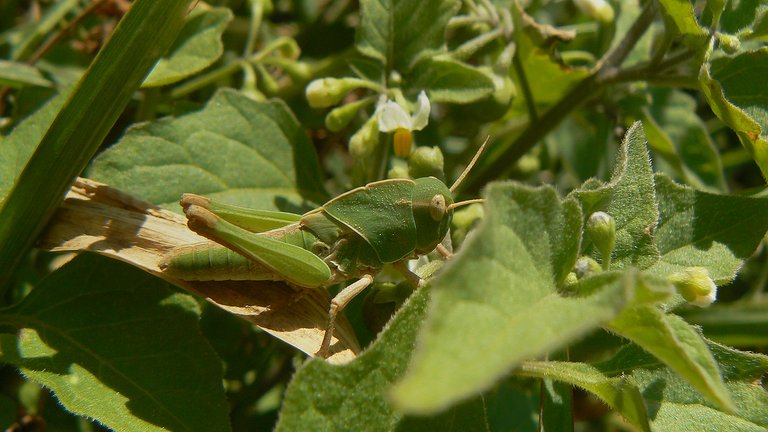
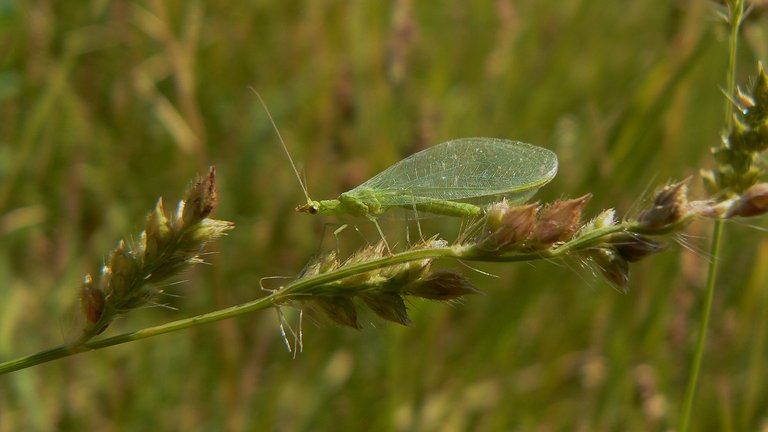
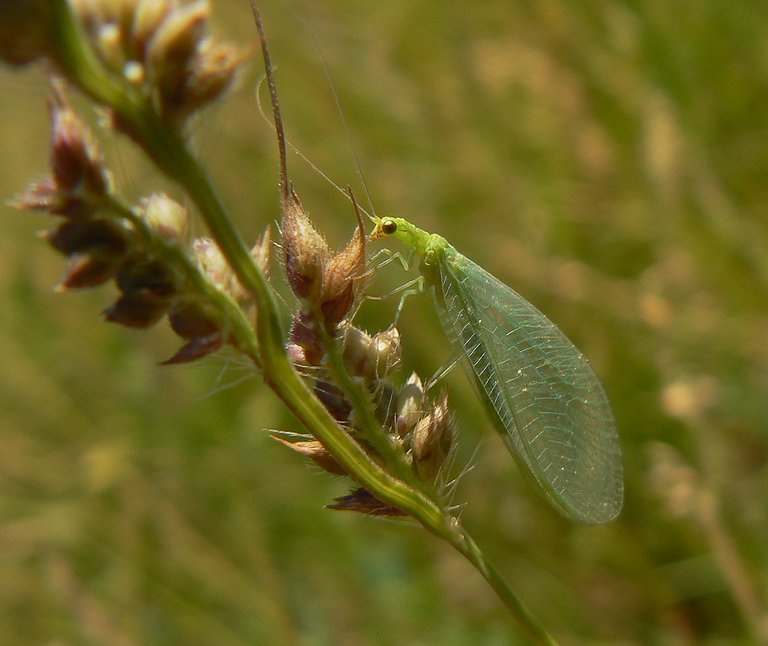
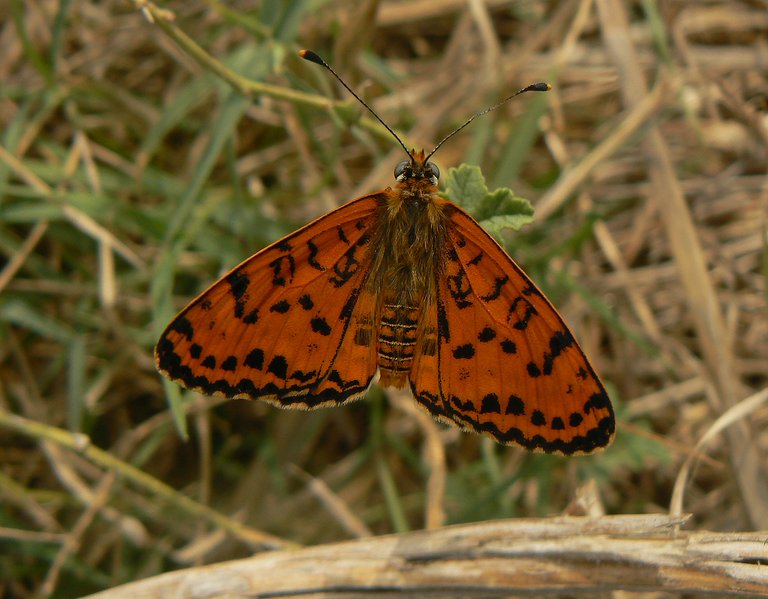
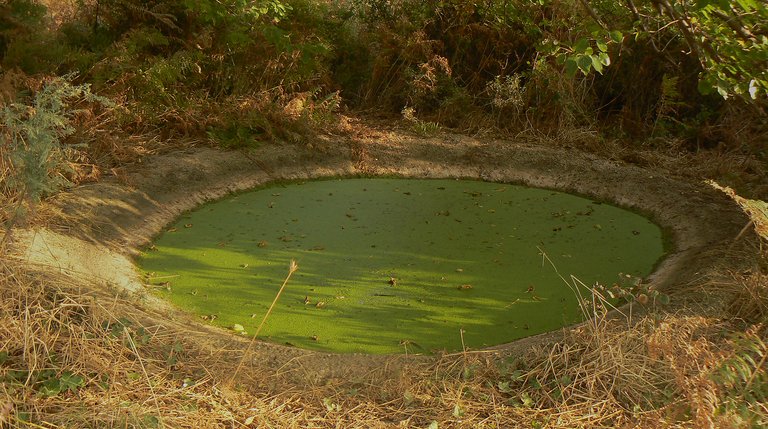
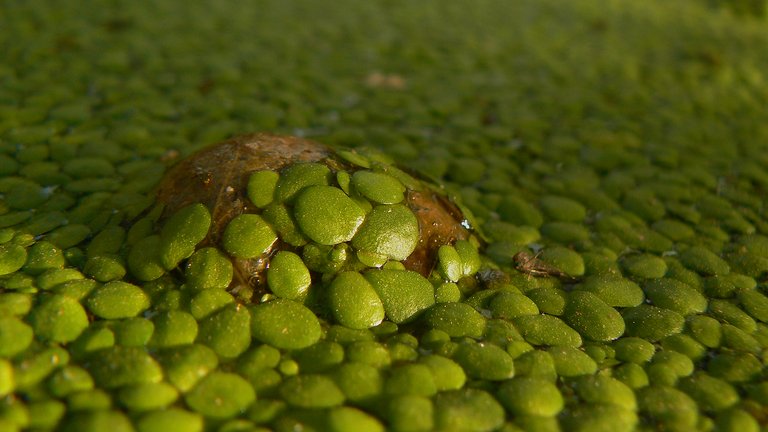



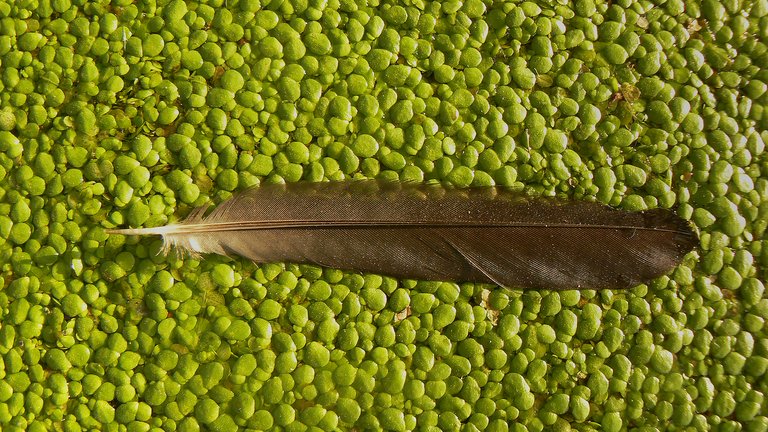
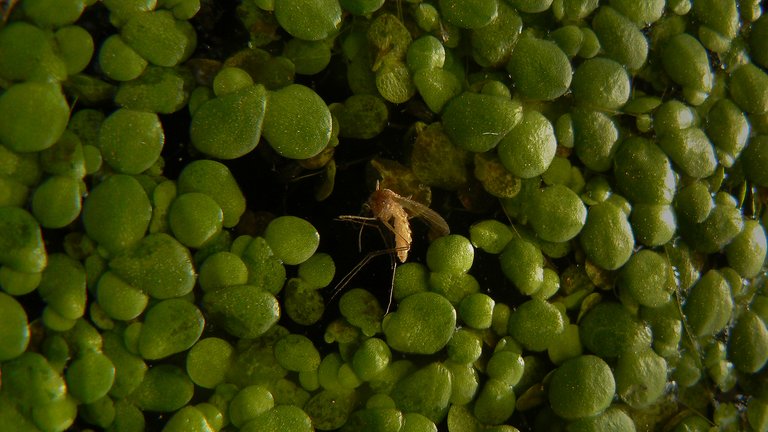

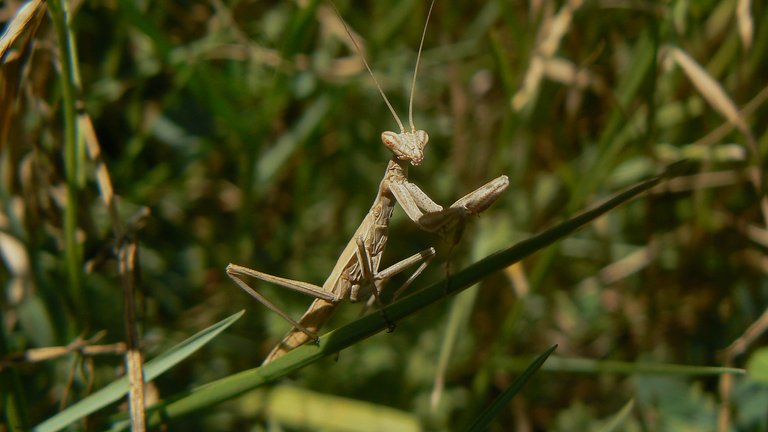
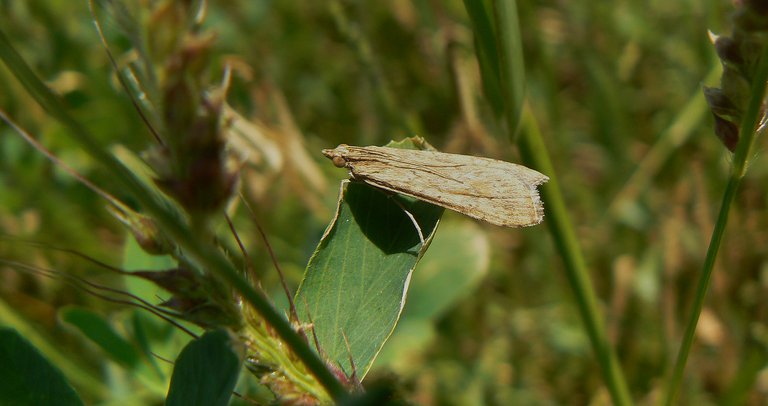
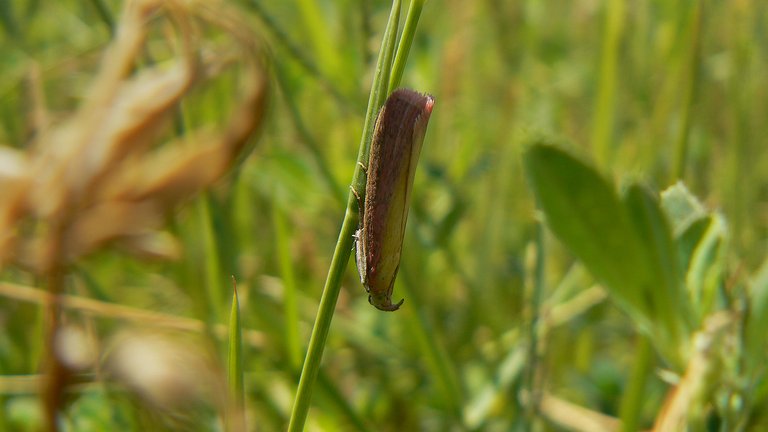
Thanks for your contribution to the STEMsocial community. Feel free to join us on discord to get to know the rest of us!
Please consider delegating to the @stemsocial account (85% of the curation rewards are returned).
You may also include @stemsocial as a beneficiary of the rewards of this post to get a stronger support.
Very surreal world of insect kingdom! I wonder what you would do if, one day, all the insects were eaten up by unknown alien beings. Would you rescue these insects from their captivity and fight for their survival!?
Your phoyos nade insects looking so attractive so those alien beings couldn’t resist.
Sorry my imagination ran wild. 🙀😂
😄 Always glad to read your imagination in a comment.😉
Loved the shots of the tops and bottoms of the butterfly’s wings. The duckweed and the first shot of the dry grass were really cool!
It always amazes me how so many of the insects that you photograph are so perfectly concealed in their surrounding green environment. Mother Nature knows the best camouflage to use every time! !LOL
Have a nice day ... 😊
lolztoken.com
Betray'all!
Credit: reddit
$LOLZ on behalf of fun.farms
(1/10)
Delegate Hive Tokens to Farm $LOLZ and earn 110% Rewards. Learn more.@borjan, I sent you an
I think you have eagle eyes to easily spot the insects for macro photos.
😃I have mole eyes without the glasses!
Salúdame a todos los insectos croatas especialmente a la hermosa mantis .
Saludos a todos los insectos croatas a la hermosa mantis especialmente.
Never have seen these grasshoppers and other insects so closely. EAch one is special, but i like Chrysoperla carnea the most.
Waow! The size of this duckweed looks really amazing and the butterflies looks beautiful too
The green is spectacular😍
Have great sunday you to, here is also weather is hot but nearly we will found cool weather.
Very Cool insects on dry grass, looks fabulous all these photos, I feel amazed by seeing all your creativity about to capture these creatures.
Thank you. 🙂 Have a great day. Glad you like the post.
Detailed photography, intricate photos. Everything looks absolutely, positively amazing. Looking forward to more greens💚
This mostly “green” selection of photographs looks very harmonious; common grasshoppers, lacewings and duckweed are magnificent, as elements of one series :)
!ALIVE
You Are Alive so I just staked 0.1 $ALIVE to your account on behalf of @ peter-stone. (9/10)@borjan!
The tip has been paid for by the We Are Alive Tribe
 through the earnings on @alive.chat, feel free to swing by our daily chat any time you want, plus you can win Hive Power (2x 50 HP) and Alive Power (2x 500 AP) delegations (4 weeks), and Ecency Points (4x 50 EP), in our chat every day.
through the earnings on @alive.chat, feel free to swing by our daily chat any time you want, plus you can win Hive Power (2x 50 HP) and Alive Power (2x 500 AP) delegations (4 weeks), and Ecency Points (4x 50 EP), in our chat every day.
Always enjoy your photography mate. I'm so fascinated by the intricate detail of the spectacular wonders of nature which you are priviledged to encounter. That butterfly is stunning! Wonder what species are below the duckweed? Wild..
Photographs taken in great detail We have so many lives that we are often surprised to see if we look at them through this lens.
#hive #posh
The day will be enjoyable, especially being able to be in the middle of such beautiful nature. @borjan
These are really beautiful flowers I must confess
So beautiful
Detailed photography. Pretty shots.
These insects are green in color so that they can easily hide themselves in green plants and protect them from predators.
A bright sunny day
you have to see that nature is priceless
Beautiful shots mate.
Very nice pictures, the insects you managed to capture in the photos are great.
Whenever summer days are there it is very hot and there is also a lot of trouble the way we see that these insects are looking very beautiful and because of them now our knowledge is also increasing a lot.
All the photos you show look very beautiful and very charming